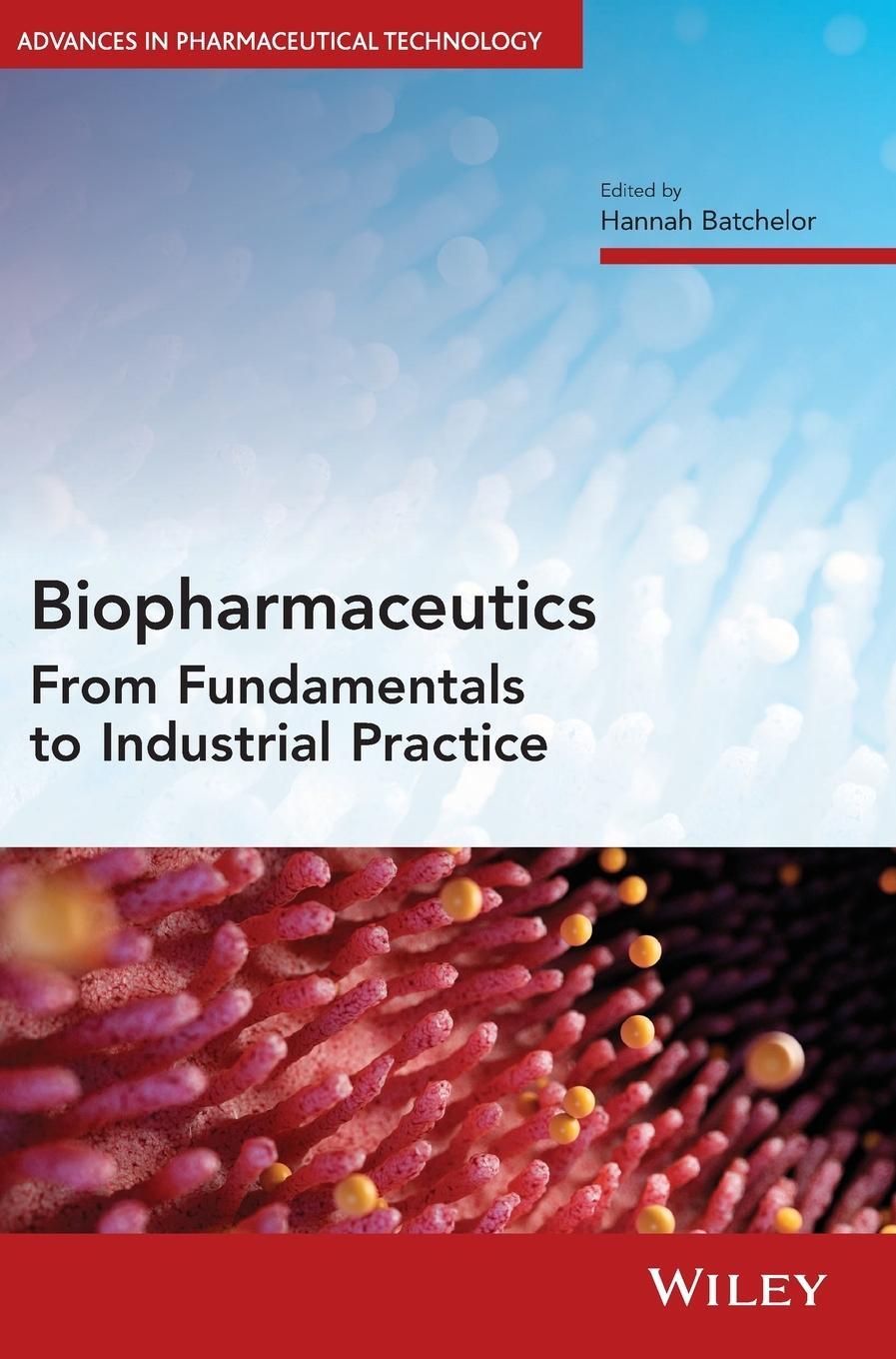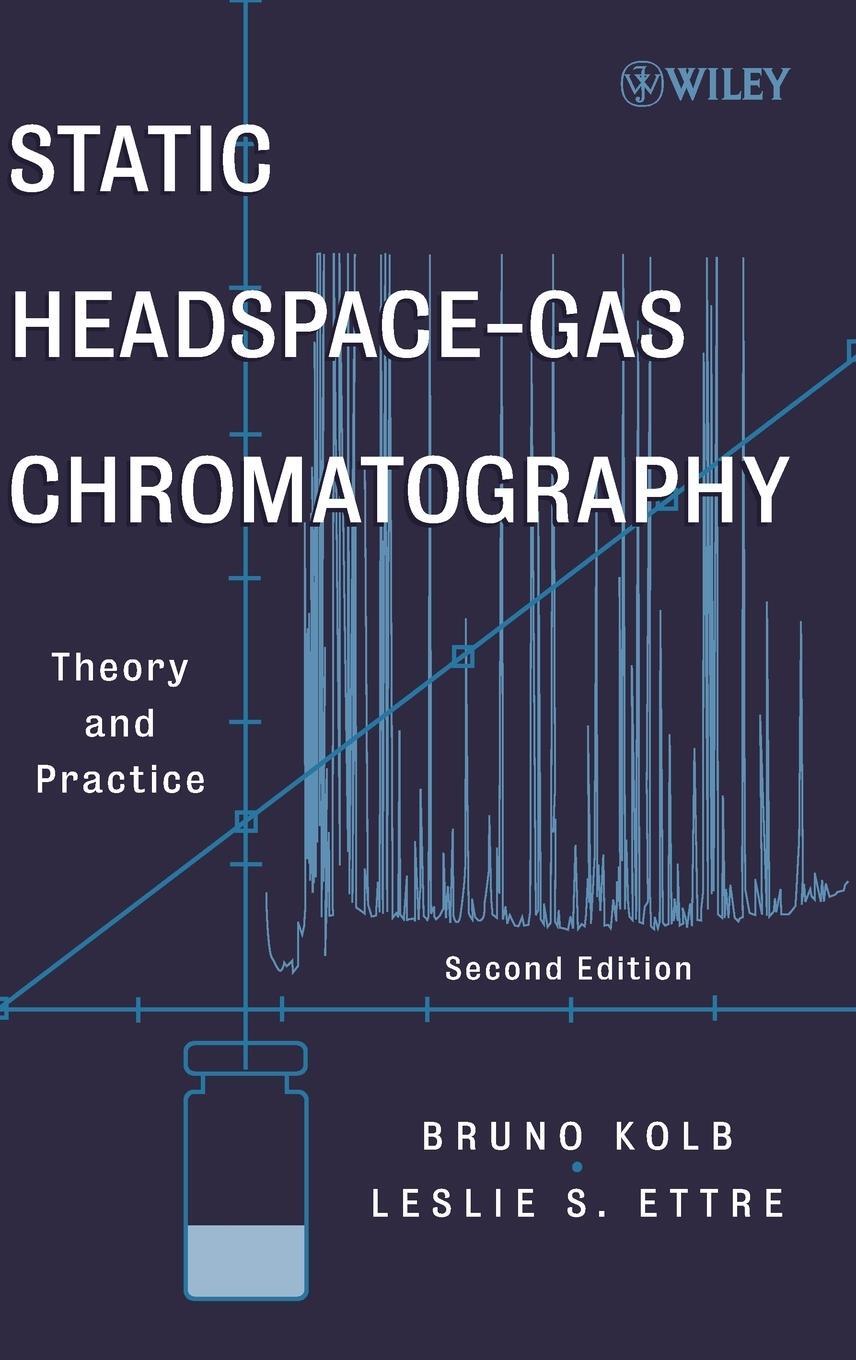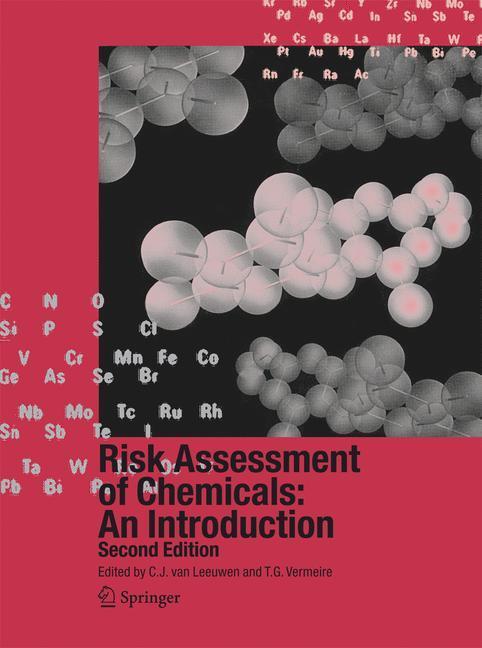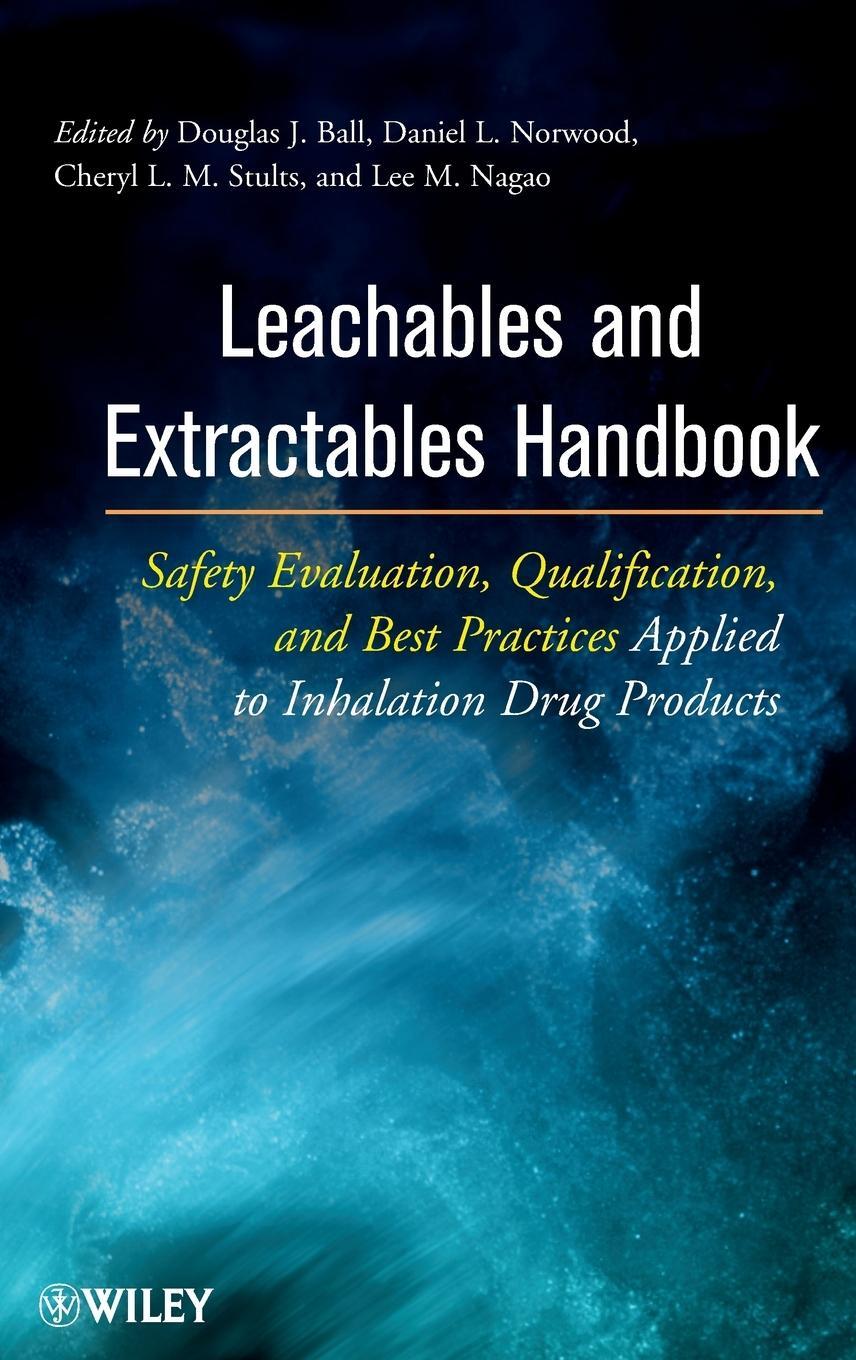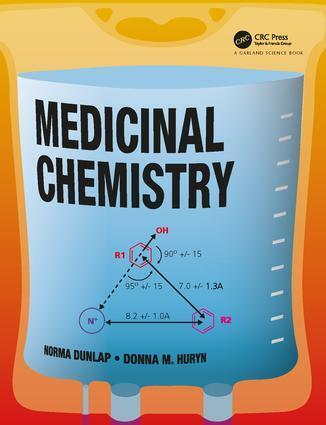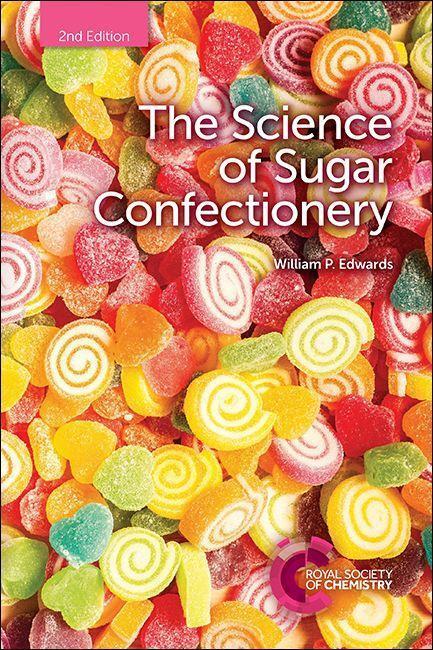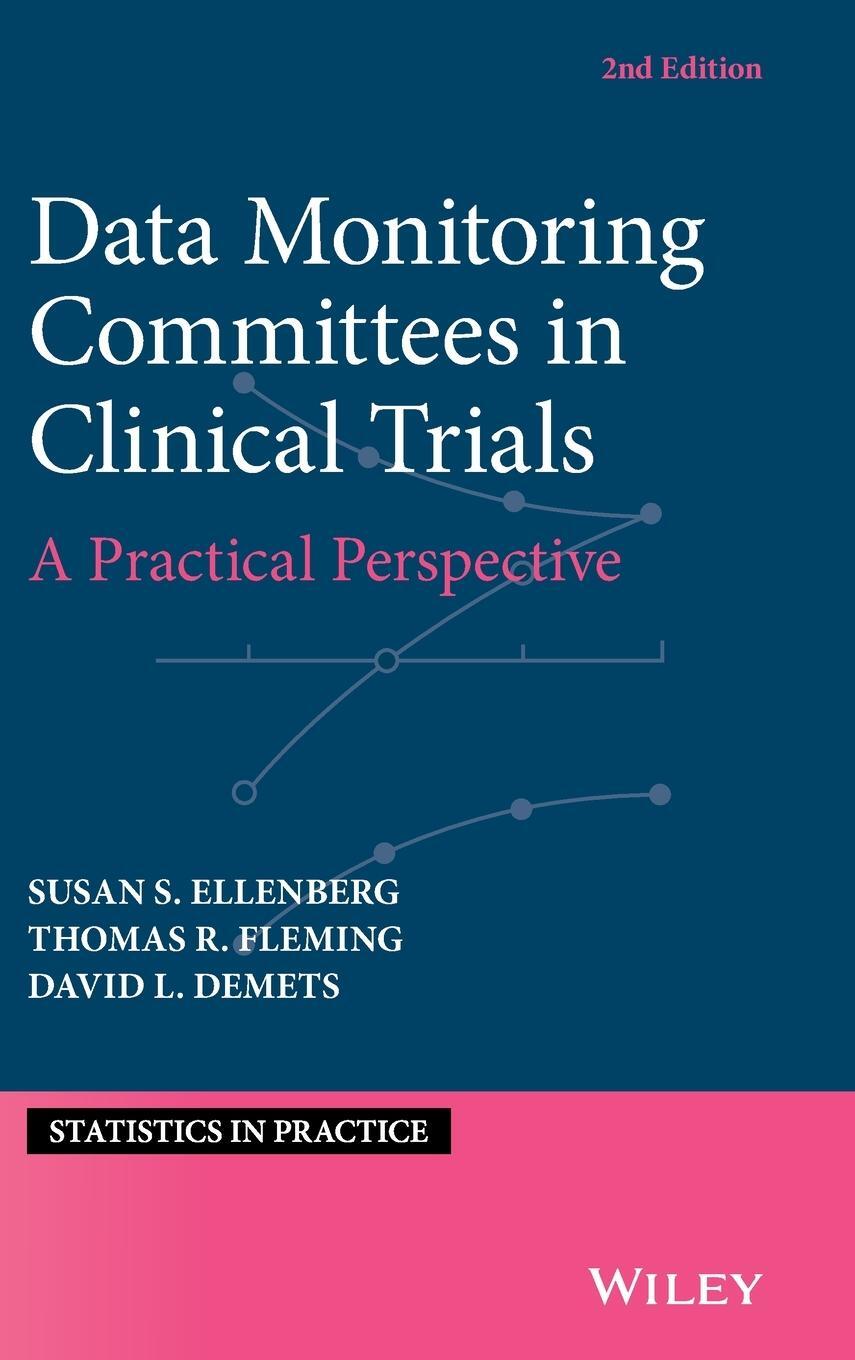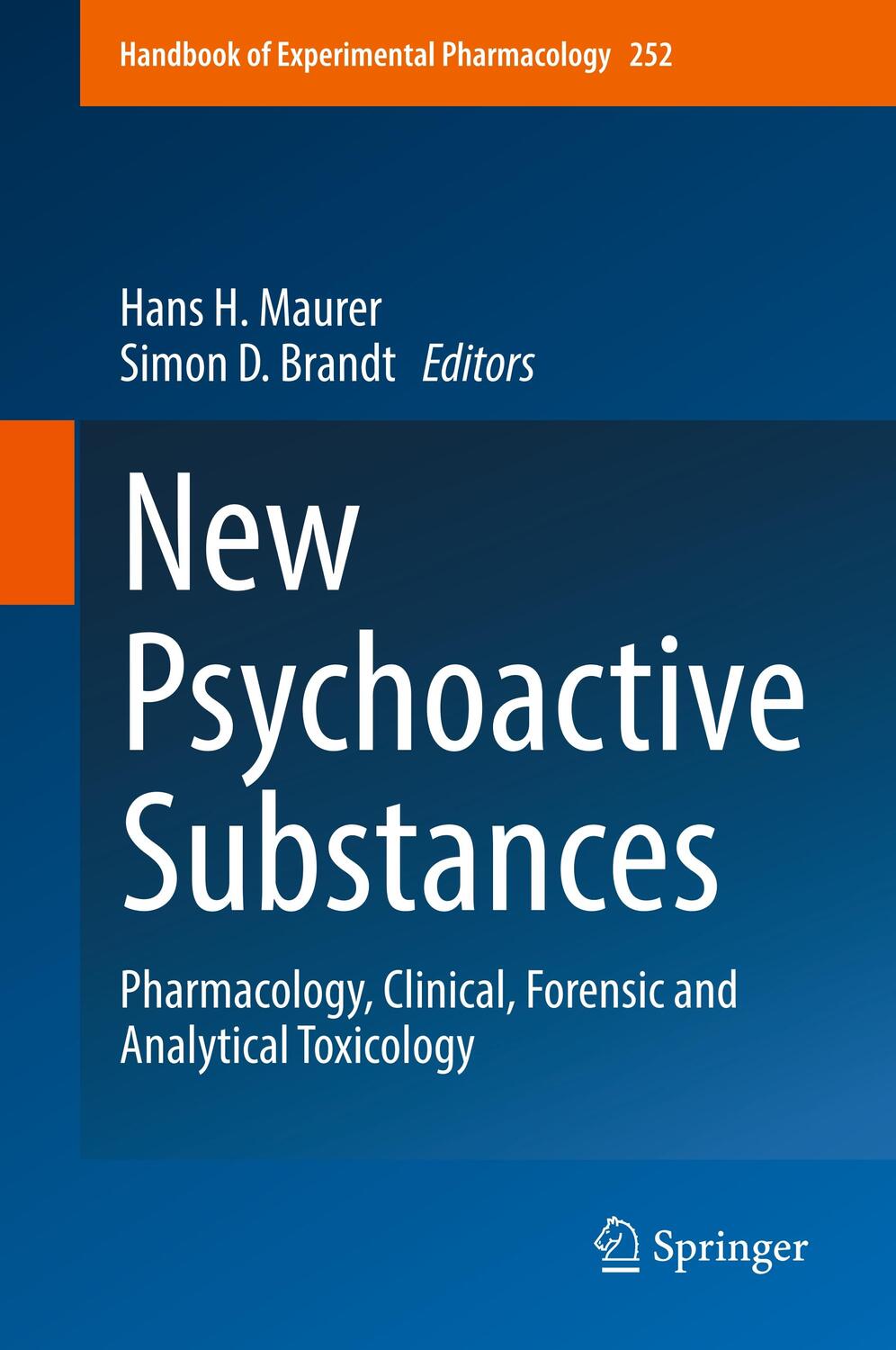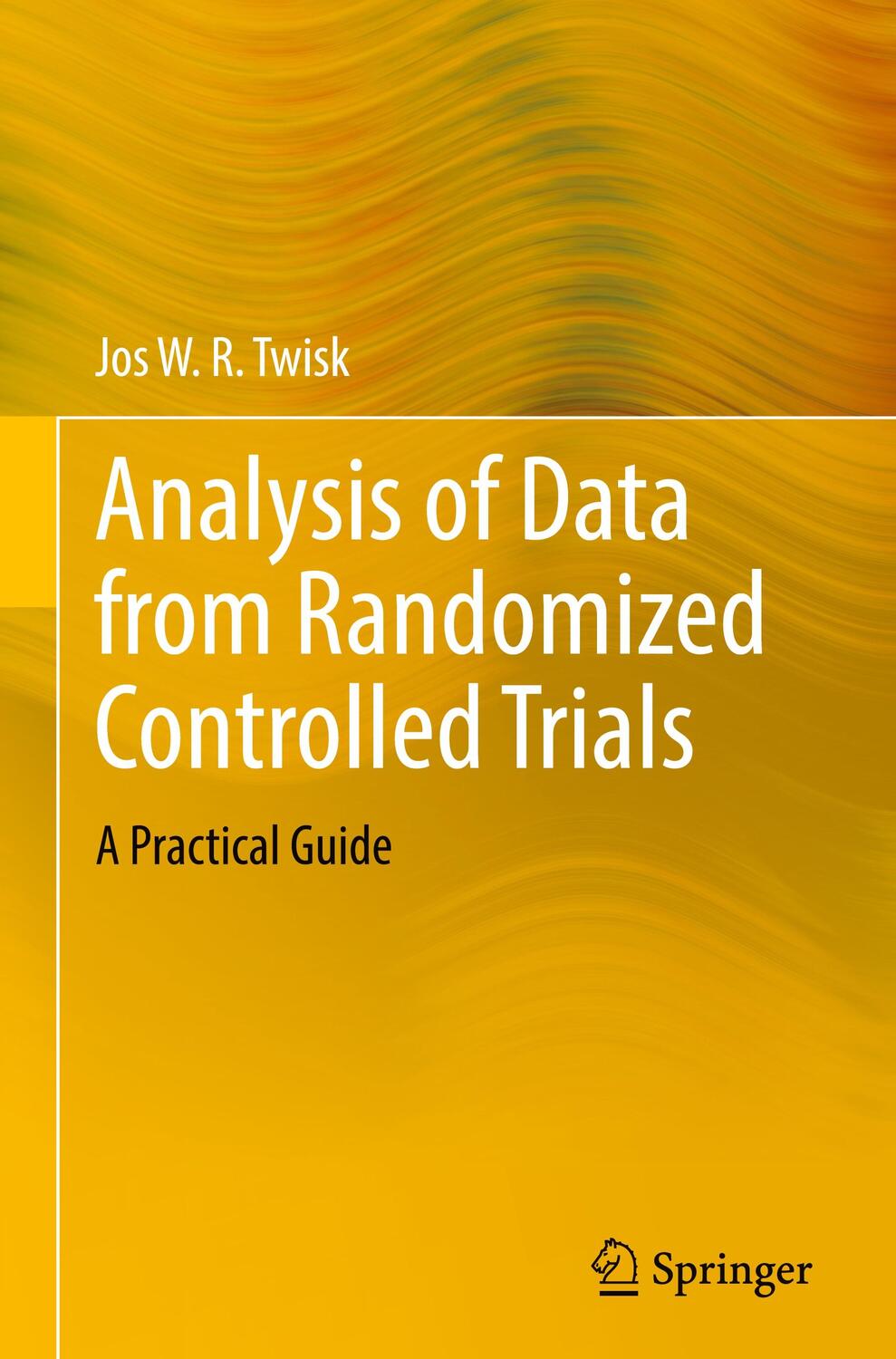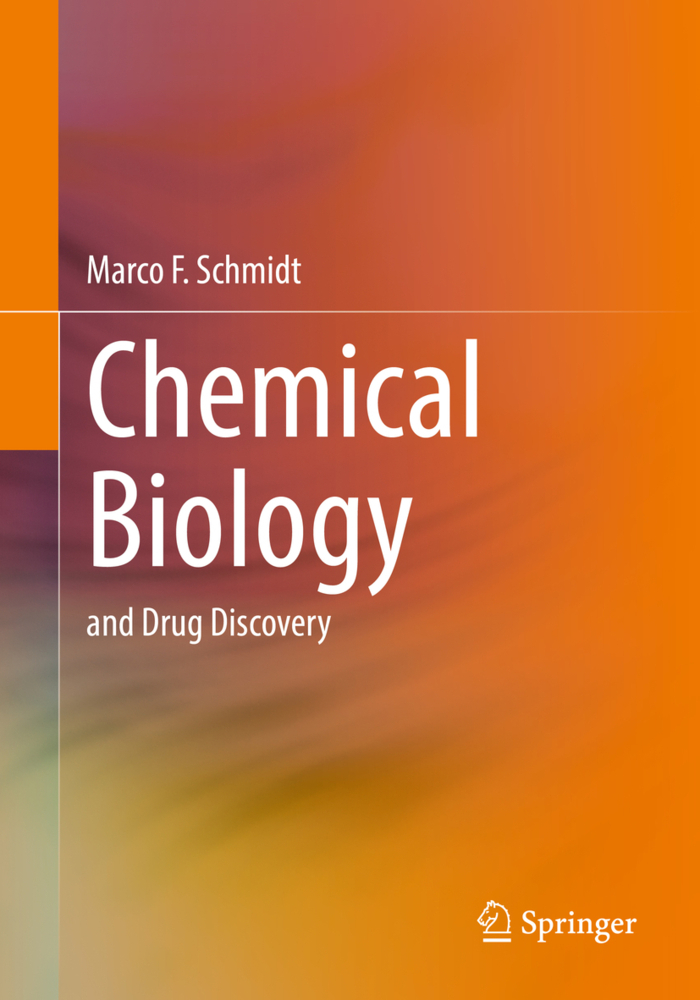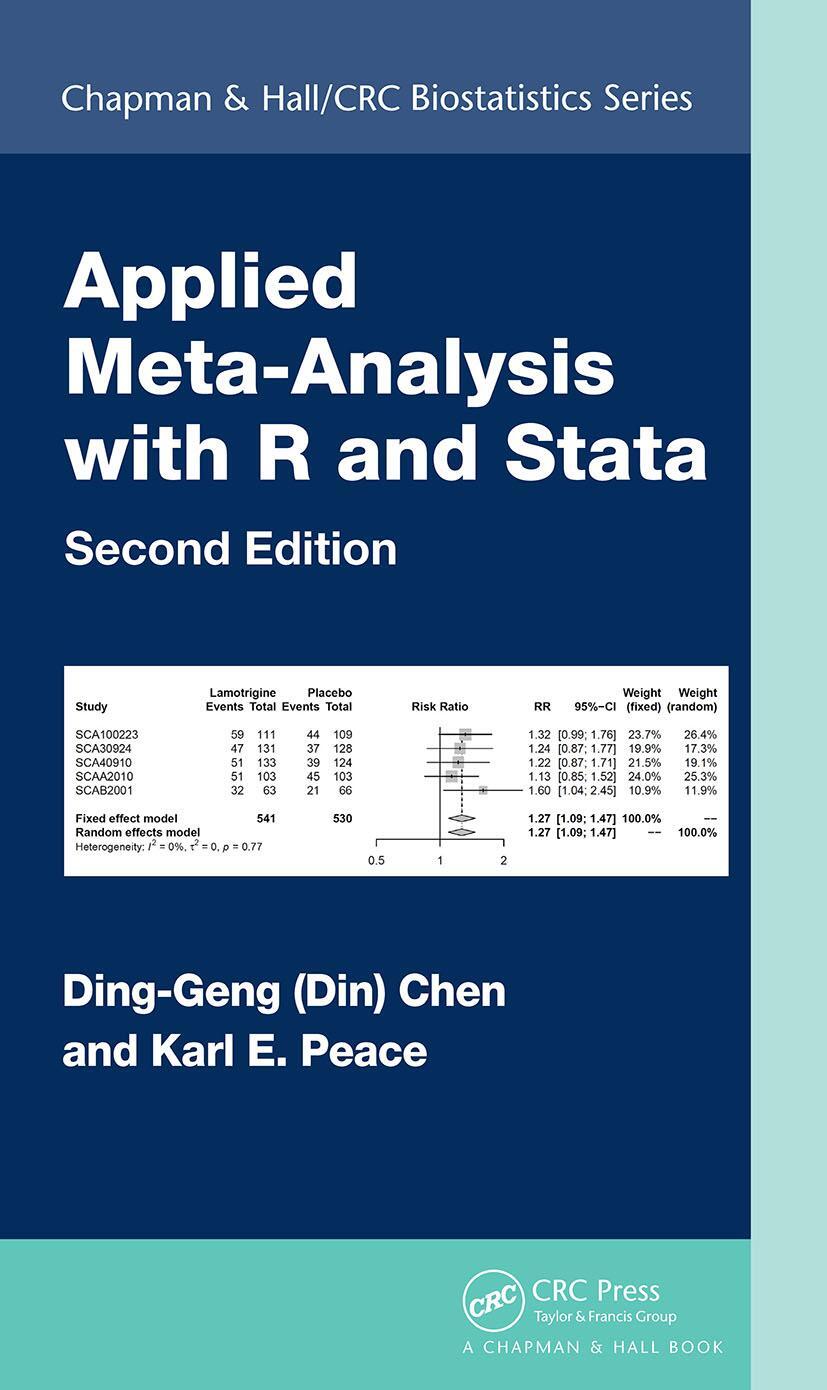Dekorationsartikel gehören nicht zum Leistungsumfang.
Sprache:
Englisch
130,50 €*
Versandkostenfrei per Post / DHL
Aktuell nicht verfügbar
Kategorien:
Beschreibung
Explore the latest research in biopharmaceutics from leading contributors in the field
In Biopharmaceutics - From Fundamentals to Industrial Practice, distinguished Scientists from the UK's Academy of Pharmaceutical Sciences Biopharmaceutica Focus Group deliver a comprehensive examination of the tools used within the field of biopharmaceutics and their applications to drug development. This edited volume is an indispensable tool for anyone seeking to better understand the field of biopharmaceutics as it rapidly develops and evolves.
Beginning with an expansive introduction to the basics of biopharmaceutics and the context that underpins the field, the included resources go on to discuss how biopharmaceutics are integrated into product development within the pharmaceutical industry. Explorations of how the regulatory aspects of biopharmaceutics function, as well as the impact of physiology and anatomy on the rate and extent of drug absorption, follow.
Readers will find insightful discussions of physiologically based modeling as a valuable asset in the biopharmaceutics toolkit and how to apply the principles of the field to special populations. The book goes on to discuss:
* Thorough introductions to biopharmaceutics, basic pharmacokinetics, and biopharmaceutics measures
* Comprehensive explorations of solubility, permeability, and dissolution
* Practical discussions of the use of biopharmaceutics to inform candidate drug selection and optimization, as well as biopharmaceutics tools for rational formulation design
* In-depth examinations of biopharmaceutics classification systems and regulatory biopharmaceutics, as well as regulatory biopharmaceutics and the impact of anatomy and physiology
Perfect for professionals working in the pharmaceutical and biopharmaceutical industries, Biopharmaceutics - From Fundamentals to Industrial Practice is an incisive and up-to-date resource on the practical, pharmaceutical applications of the field.
In Biopharmaceutics - From Fundamentals to Industrial Practice, distinguished Scientists from the UK's Academy of Pharmaceutical Sciences Biopharmaceutica Focus Group deliver a comprehensive examination of the tools used within the field of biopharmaceutics and their applications to drug development. This edited volume is an indispensable tool for anyone seeking to better understand the field of biopharmaceutics as it rapidly develops and evolves.
Beginning with an expansive introduction to the basics of biopharmaceutics and the context that underpins the field, the included resources go on to discuss how biopharmaceutics are integrated into product development within the pharmaceutical industry. Explorations of how the regulatory aspects of biopharmaceutics function, as well as the impact of physiology and anatomy on the rate and extent of drug absorption, follow.
Readers will find insightful discussions of physiologically based modeling as a valuable asset in the biopharmaceutics toolkit and how to apply the principles of the field to special populations. The book goes on to discuss:
* Thorough introductions to biopharmaceutics, basic pharmacokinetics, and biopharmaceutics measures
* Comprehensive explorations of solubility, permeability, and dissolution
* Practical discussions of the use of biopharmaceutics to inform candidate drug selection and optimization, as well as biopharmaceutics tools for rational formulation design
* In-depth examinations of biopharmaceutics classification systems and regulatory biopharmaceutics, as well as regulatory biopharmaceutics and the impact of anatomy and physiology
Perfect for professionals working in the pharmaceutical and biopharmaceutical industries, Biopharmaceutics - From Fundamentals to Industrial Practice is an incisive and up-to-date resource on the practical, pharmaceutical applications of the field.
Explore the latest research in biopharmaceutics from leading contributors in the field
In Biopharmaceutics - From Fundamentals to Industrial Practice, distinguished Scientists from the UK's Academy of Pharmaceutical Sciences Biopharmaceutica Focus Group deliver a comprehensive examination of the tools used within the field of biopharmaceutics and their applications to drug development. This edited volume is an indispensable tool for anyone seeking to better understand the field of biopharmaceutics as it rapidly develops and evolves.
Beginning with an expansive introduction to the basics of biopharmaceutics and the context that underpins the field, the included resources go on to discuss how biopharmaceutics are integrated into product development within the pharmaceutical industry. Explorations of how the regulatory aspects of biopharmaceutics function, as well as the impact of physiology and anatomy on the rate and extent of drug absorption, follow.
Readers will find insightful discussions of physiologically based modeling as a valuable asset in the biopharmaceutics toolkit and how to apply the principles of the field to special populations. The book goes on to discuss:
* Thorough introductions to biopharmaceutics, basic pharmacokinetics, and biopharmaceutics measures
* Comprehensive explorations of solubility, permeability, and dissolution
* Practical discussions of the use of biopharmaceutics to inform candidate drug selection and optimization, as well as biopharmaceutics tools for rational formulation design
* In-depth examinations of biopharmaceutics classification systems and regulatory biopharmaceutics, as well as regulatory biopharmaceutics and the impact of anatomy and physiology
Perfect for professionals working in the pharmaceutical and biopharmaceutical industries, Biopharmaceutics - From Fundamentals to Industrial Practice is an incisive and up-to-date resource on the practical, pharmaceutical applications of the field.
In Biopharmaceutics - From Fundamentals to Industrial Practice, distinguished Scientists from the UK's Academy of Pharmaceutical Sciences Biopharmaceutica Focus Group deliver a comprehensive examination of the tools used within the field of biopharmaceutics and their applications to drug development. This edited volume is an indispensable tool for anyone seeking to better understand the field of biopharmaceutics as it rapidly develops and evolves.
Beginning with an expansive introduction to the basics of biopharmaceutics and the context that underpins the field, the included resources go on to discuss how biopharmaceutics are integrated into product development within the pharmaceutical industry. Explorations of how the regulatory aspects of biopharmaceutics function, as well as the impact of physiology and anatomy on the rate and extent of drug absorption, follow.
Readers will find insightful discussions of physiologically based modeling as a valuable asset in the biopharmaceutics toolkit and how to apply the principles of the field to special populations. The book goes on to discuss:
* Thorough introductions to biopharmaceutics, basic pharmacokinetics, and biopharmaceutics measures
* Comprehensive explorations of solubility, permeability, and dissolution
* Practical discussions of the use of biopharmaceutics to inform candidate drug selection and optimization, as well as biopharmaceutics tools for rational formulation design
* In-depth examinations of biopharmaceutics classification systems and regulatory biopharmaceutics, as well as regulatory biopharmaceutics and the impact of anatomy and physiology
Perfect for professionals working in the pharmaceutical and biopharmaceutical industries, Biopharmaceutics - From Fundamentals to Industrial Practice is an incisive and up-to-date resource on the practical, pharmaceutical applications of the field.
Über den Autor
Edited by
Hannah Batchelor, Strathclyde Institute of Pharmacy and Biomedical Sciences.
Inhaltsverzeichnis
List of Contributors xv
Foreword xvii
1 An Introduction to Biopharmaceutics 1
Hannah Batchelor
1.1 Introduction 1
1.2 History of Biopharmaceutics 1
1.3 Key Concepts and Definitions Used Within Biopharmaceutics 3
1.4 The Role of Biopharmaceutics in Drug Development 6
1.5 Conclusions 8
2 Basic Pharmacokinetics 9
Hamid A. Merchant
2.1 Introduction 9
2.2 What is 'Pharmacokinetics'? 9
2.3 Pharmacokinetic Profile 10
2.4 Bioavailability 12
2.5 Drug Distribution 13
2.6 Volume of Distribution 15
2.7 Elimination 16
2.7.1 Metabolism 16
2.7.2 Excretion 17
2.8 Elimination Half-Life (t¿) 19
2.9 Elimination Rate Constant 20
2.9.1 Clearance 20
2.10 Area Under the Curve (AUC) 21
2.11 Bioequivalence 22
2.12 Steady State 23
2.13 Compartmental Concepts in Pharmacokinetics 24
2.14 Concept of Linearity in Pharmacokinetics 25
2.15 Conclusions 28
3 Introduction to Biopharmaceutics Measures 31
Hannah Batchelor and Pavel Gershkovich
3.1 Introduction 31
3.2 Solubility 31
3.3 Dissolution 33
3.4 Permeability 34
3.5 Absorptive Flux 35
3.6 Lipinsky's Rule of 5 35
3.6.1 Molecular Weight 36
3.6.2 Lipophilicity 36
3.6.3 Hydrogen Bond Donors/Acceptors 37
4 Solubility 39
Hannah Batchelor
4.1 Definition of Solubility 39
4.2 The Importance of Solubility in Biopharmaceutics 39
4.3 What Level of Solubility Is Required? 40
4.4 Solubility-Limited Absorption 41
4.5 Methods to Assess Solubility 41
4.6 Brief Overview of Forces Involved in Solubility 42
4.6.1 van der Waals Interactions 42
4.6.2 Hydrogen Bonding 42
4.6.3 Ionic Interactions 43
4.7 Solid-State Properties and Solubility 43
4.8 pH and Drug Solubility 43
4.9 Solvents 44
4.9.1 Biorelevant Solubility 45
4.9.2 Buffer System - Phosphate vs Bicarbonate 45
4.9.3 Solubilisation by Surfactants 45
4.9.4 Solubilisation During Digestion 47
4.9.5 Excipients and Solubility 47
4.10 Risk of Precipitation 48
4.11 Solubility and Link to Lipophilicity 49
4.12 Conclusions 49
5 Permeability 51
Chris Roe and Vanessa Zann
5.1 Introduction 51
5.2 Enzymes, Gut Wall Metabolism, Tissue Permeability and Transporters 51
5.2.1 Enzymes 52
5.2.2 Drug Transporters 54
5.2.3 Efflux Transporters 55
5.2.4 Transporters of Greatest Relevance to Oral Biopharmaceutics 56
5.2.5 Regulatory Overview of Transporter Effects on Biopharmaceutics 58
5.2.6 Regional Expression and Polymorphism of Intestinal Transporters and Impact of Drug Variability 58
5.3 Applications and Limitations of Characterisation and Predictive Tools for Permeability Assessment 59
5.3.1 In Silico Tools: Predictive Models for Permeability 59
5.3.2 in vitro Tools 60
5.3.2.1 PAMPA 60
5.3.2.2 Cell Lines 61
5.3.3 ex vivo Tools 63
5.3.3.1 Ussing Chambers 63
5.3.3.2 Everted Intestinal Sac/Ring 65
5.3.4 In Situ Tools 66
5.3.4.1 Closed-Loop Intestinal Perfusion 66
5.3.4.2 Single-Pass Intestinal Perfusion 66
5.3.4.3 Intestinal Perfusion with Venous Sampling 67
5.3.4.4 Vascularly Perfused Intestinal Models 67
5.4 in vivo Tools 67
5.5 Conclusion 69
6 Dissolution 75
Hannah Batchelor and James Butler
6.1 Introduction 75
6.2 Purpose of Dissolution Testing 75
6.2.1 Dissolution Versus Solubility 76
6.3 History of Dissolution Testing 77
6.4 Compendial (Pharmacopeial) Dissolution Apparatus 78
6.4.1 USP1 and 2 Apparatus 78
6.4.2 USP3 Apparatus 79
6.4.3 USP4 Apparatus 80
6.4.4 USP5 Apparatus 82
6.4.5 USP6 Apparatus 82
6.4.6 USP7 Apparatus 82
6.4.7 Intrinsic Dissolution Rate (IDR) Apparatus 83
6.4.8 Micro-dissolution Apparatus 83
6.5 Dissolution Media Selection 83
6.5.1 Biphasic Dissolution Media 84
6.6 Dissolution Agitation Rates 84
6.7 Reporting Dissolution Data 85
6.8 In Vitro In Vivo Relationships and Correlations (IVIVR/IVIVC) 86
6.8.1 Convolution and Deconvolution of Dissolution Data 87
6.9 Evolution of Biorelevant Dissolution Testing 88
6.9.1 Biorelevant Dissolution Media 88
6.9.2 Dissolution Testing to Mimic GI Transit 93
6.9.3 Dissolution Testing to Mimic Motility/Hydrodynamic Conditions 94
6.9.4 Dissolution Testing to Incorporate Permeability 95
6.10 Conclusions 96
7 Biopharmaceutics to Inform Candidate Drug Selection and Optimisation 103
Linette Ruston
7.1 Introduction 103
7.2 Oral Product Design Considerations During Early Development 103
7.3 Biopharmaceutics in Drug Discovery 105
7.3.1 Pre-Clinical Studies 106
7.4 Biopharmaceutics Assessment 107
7.4.1 Solubility 107
7.4.2 Permeability 107
7.4.3 Dissolution 108
7.4.4 Biopharmaceutics Classification System 108
7.4.5 Lipophilicity 109
7.4.6 pKa 109
7.4.7 Molecular Size 109
7.4.8 Crystallinity 109
7.4.9 In Vivo Pre-Clinical Studies 109
7.4.10 In Silico Modelling 110
7.4.11 Human Absorption/Dose Prediction 110
7.5 Output of Biopharmaceutics Assessment 110
7.5.1 New Modalities/Complex Delivery Systems Within Early Development 112
7.6 Influence/Optimise/Design Properties to Inform Formulation Development 112
7.6.1 Fraction Absorbed Classification System 113
7.7 Conclusion 114
8 Biopharmaceutics Tools for Rational Formulation Design 117
Panagiota Zarmpi, Mark McAllister, James Butler, and Nikoletta Fotaki
8.1 Introduction 117
8.2 Formulation Development to Optimise Drug Bioavailability 118
8.3 Traditional Formulation Strategies 119
8.3.1 Decision Making for Conventional or Enabling Formulations 119
8.4 Decision Trees to Guide Formulation Development 119
8.4.1 Decision Trees Based on Biopharmaceutics Classification System (BCS) 119
8.4.2 Decision Trees Based on Developability Classification System (DCS) 121
8.4.3 Expanded Decision Trees 122
8.5 Computational Tools to Guide Formulation Strategies 124
8.5.1 Statistical Tools 124
8.5.2 Physiologically Based Pharmacokinetic/Biopharmaceutics Models 125
8.6 Decision- Making for Optimising Enabling Formulations 125
8.7 Decision Trees for Enabled Formulations 127
8.7.1 Statistical Tools 128
8.7.2 Physiologically Based Pharmacokinetic/Biopharmaceutics Models 128
8.8 System-Based Formulation Strategies 128
8.8.1 Quality by Design 128
8.8.2 Tools to Identify Quality Target Product Profile 129
8.9 Biopharmaceutics Risk Assessment Roadmap (BioRAM) 131
8.9.1 Tools to Identify Quality Target Product Profile 131
8.10 Conclusions 132
9 Biopharmaceutic Classification System 139
Hannah Batchelor and Talia Flanagan
9.1 Description and History of the BCS 139
9.2 BCS-Based Criteria for Solubility, Dissolution and Permeability 139
9.3 BCS-Based Biowaivers 141
9.4 Regulatory Development of BCS-Based Biowaivers 142
9.5 International Harmonisation of BCS-Based Biowaiver Criteria - ICH M9 143
9.5.1 Application of BCS-Based Biowaivers 144
9.5.1.1 Drug Product Type 144
9.5.1.2 Composition 145
9.5.1.3 Dissolution Similarity 145
9.6 BCS as a Development Tool 146
9.6.1 Candidate Selection 146
9.6.2 Solid Form Selection 146
9.6.3 Product Development 146
9.7 Beyond the BCS 147
9.7.1 Biopharmaceutic Drug Disposition Classification System (BDDCS) 148
9.7.2 Developability Classification System 148
9.7.3 Fraction Absorbed Classification System 148
9.7.4 BCS Applied to Special Populations 149
9.8 Conclusions 149
10 Regulatory Biopharmaceutics 153
Shanoo Budhdeo, Paul A. Dickinson, and Talia Flanagan
10.1 Introduction 153
10.2 Clinical Bioequivalence Studies 154
10.3 Design of Clinical Bioequivalence (BE) Studies 156
10.4 Implication of Bioequivalence Metrics 157
10.5 Bioequivalence Regulatory Guidelines 159
10.6 Biowaivers 159
10.7 Biopharmaceutics in Quality by Design 159
10.8 Control of Drug Product and Clinically Relevant Specifications 162
10.9 Establishing Clinically Relevant Dissolution Methods and Specifications 162
10.10 Application of In Silico Physiologically Based Biopharmaceutics Modelling (PBBM) to Develop Clinically Relevant Specifications 165
10.11 Additional Considerations for Establishing Dissolution Methods and Specifications 165
10.12 Common Technical Document (CTD) 166
10.13 Other Routes of Administration and Locally Acting Drug Products 167
10.14 Conclusion 168
11 Impact of Anatomy and Physiology 171
Francesca K. H. Gavins, Christine M. Madla, Sarah J. Trenfield, Laura E. McCoubrey, Abdul W. Basit, and Mark McAllister
11.1 Introduction 171
11.2 Influence of GI Conditions on Pharmacokinetic Studies 172
11.3 The Stomach 172
11.3.1 Gastric Anatomy 172
11.3.2 Gastric Motility and Mixing 174
11.3.3 Gastric Emptying 175
11.3.3.1 Gastric Fed State 176
11.3.4 Gastric Fluid Volume 176
11.3.5 Gastric Temperature 177
11.3.6 Gastric Fluid Composition 177
11.3.6.1 Gastric pH 177
11.3.6.2 Gastric Bile Salt Composition and Concentration 178
11.4 Small Intestine 178
11.4.1 Small Intestinal Anatomy 178
11.4.2 Small Intestinal Motility and Mixing 180
11.4.3 Small Intestinal Transit Time 180
11.4.4 Small Intestinal Volume 180
11.4.5 Small Intestinal Fluid Composition 181
11.4.5.1 Small Intestinal pH 182
11.4.5.2 Small Intestinal Buffer Capacity 182
11.4.5.3 Small Intestinal Surface Tension 182
11.4.5.4 Small Intestinal Osmolality 182
11.4.5.5 Bile Salt Composition and Concentration 183
11.5 The Colon/Large Intestine 183
11.5.1 Large Intestine Anatomy 184
11.5.2 Large Intestinal Motility and Mixing 184
11.5.3 Large Intestinal Transit Time 185
11.5.4 Large Intestinal Volume 185
11.5.5 Large Intestinal Fluid Composition 185
11.5.5.1 Large Intestinal pH 186
11.5.5.2 Large Intestinal Buffer Capacity 186
11.5.5.3 Large Intestinal Surface Tension 186
11.5.5.4 Large Intestinal Osmolality 186
11.5.5.5 Bile Salt Composition and Concentration 186
11.5.6 Impact of Microbiome on Oral Drug Delivery 187
11.6 Conclusions 188
12 Integrating Biopharmaceutics to Predict Oral Absorption Using PBPK Modelling 197
Konstantinos Stamatopoulos
12.1 Introduction 197
12.2 Mechanistic Models 198
12.3 Solubility Inputs 200
12.4 Dissolution Inputs 203
12.4.1 Fluid Dynamics and Dissolution 205
12.5 Permeability Inputs 206
12.6 Incorporation of Modelling and Simulation into Drug Development 208
12.6.1 Understanding the...
Foreword xvii
1 An Introduction to Biopharmaceutics 1
Hannah Batchelor
1.1 Introduction 1
1.2 History of Biopharmaceutics 1
1.3 Key Concepts and Definitions Used Within Biopharmaceutics 3
1.4 The Role of Biopharmaceutics in Drug Development 6
1.5 Conclusions 8
2 Basic Pharmacokinetics 9
Hamid A. Merchant
2.1 Introduction 9
2.2 What is 'Pharmacokinetics'? 9
2.3 Pharmacokinetic Profile 10
2.4 Bioavailability 12
2.5 Drug Distribution 13
2.6 Volume of Distribution 15
2.7 Elimination 16
2.7.1 Metabolism 16
2.7.2 Excretion 17
2.8 Elimination Half-Life (t¿) 19
2.9 Elimination Rate Constant 20
2.9.1 Clearance 20
2.10 Area Under the Curve (AUC) 21
2.11 Bioequivalence 22
2.12 Steady State 23
2.13 Compartmental Concepts in Pharmacokinetics 24
2.14 Concept of Linearity in Pharmacokinetics 25
2.15 Conclusions 28
3 Introduction to Biopharmaceutics Measures 31
Hannah Batchelor and Pavel Gershkovich
3.1 Introduction 31
3.2 Solubility 31
3.3 Dissolution 33
3.4 Permeability 34
3.5 Absorptive Flux 35
3.6 Lipinsky's Rule of 5 35
3.6.1 Molecular Weight 36
3.6.2 Lipophilicity 36
3.6.3 Hydrogen Bond Donors/Acceptors 37
4 Solubility 39
Hannah Batchelor
4.1 Definition of Solubility 39
4.2 The Importance of Solubility in Biopharmaceutics 39
4.3 What Level of Solubility Is Required? 40
4.4 Solubility-Limited Absorption 41
4.5 Methods to Assess Solubility 41
4.6 Brief Overview of Forces Involved in Solubility 42
4.6.1 van der Waals Interactions 42
4.6.2 Hydrogen Bonding 42
4.6.3 Ionic Interactions 43
4.7 Solid-State Properties and Solubility 43
4.8 pH and Drug Solubility 43
4.9 Solvents 44
4.9.1 Biorelevant Solubility 45
4.9.2 Buffer System - Phosphate vs Bicarbonate 45
4.9.3 Solubilisation by Surfactants 45
4.9.4 Solubilisation During Digestion 47
4.9.5 Excipients and Solubility 47
4.10 Risk of Precipitation 48
4.11 Solubility and Link to Lipophilicity 49
4.12 Conclusions 49
5 Permeability 51
Chris Roe and Vanessa Zann
5.1 Introduction 51
5.2 Enzymes, Gut Wall Metabolism, Tissue Permeability and Transporters 51
5.2.1 Enzymes 52
5.2.2 Drug Transporters 54
5.2.3 Efflux Transporters 55
5.2.4 Transporters of Greatest Relevance to Oral Biopharmaceutics 56
5.2.5 Regulatory Overview of Transporter Effects on Biopharmaceutics 58
5.2.6 Regional Expression and Polymorphism of Intestinal Transporters and Impact of Drug Variability 58
5.3 Applications and Limitations of Characterisation and Predictive Tools for Permeability Assessment 59
5.3.1 In Silico Tools: Predictive Models for Permeability 59
5.3.2 in vitro Tools 60
5.3.2.1 PAMPA 60
5.3.2.2 Cell Lines 61
5.3.3 ex vivo Tools 63
5.3.3.1 Ussing Chambers 63
5.3.3.2 Everted Intestinal Sac/Ring 65
5.3.4 In Situ Tools 66
5.3.4.1 Closed-Loop Intestinal Perfusion 66
5.3.4.2 Single-Pass Intestinal Perfusion 66
5.3.4.3 Intestinal Perfusion with Venous Sampling 67
5.3.4.4 Vascularly Perfused Intestinal Models 67
5.4 in vivo Tools 67
5.5 Conclusion 69
6 Dissolution 75
Hannah Batchelor and James Butler
6.1 Introduction 75
6.2 Purpose of Dissolution Testing 75
6.2.1 Dissolution Versus Solubility 76
6.3 History of Dissolution Testing 77
6.4 Compendial (Pharmacopeial) Dissolution Apparatus 78
6.4.1 USP1 and 2 Apparatus 78
6.4.2 USP3 Apparatus 79
6.4.3 USP4 Apparatus 80
6.4.4 USP5 Apparatus 82
6.4.5 USP6 Apparatus 82
6.4.6 USP7 Apparatus 82
6.4.7 Intrinsic Dissolution Rate (IDR) Apparatus 83
6.4.8 Micro-dissolution Apparatus 83
6.5 Dissolution Media Selection 83
6.5.1 Biphasic Dissolution Media 84
6.6 Dissolution Agitation Rates 84
6.7 Reporting Dissolution Data 85
6.8 In Vitro In Vivo Relationships and Correlations (IVIVR/IVIVC) 86
6.8.1 Convolution and Deconvolution of Dissolution Data 87
6.9 Evolution of Biorelevant Dissolution Testing 88
6.9.1 Biorelevant Dissolution Media 88
6.9.2 Dissolution Testing to Mimic GI Transit 93
6.9.3 Dissolution Testing to Mimic Motility/Hydrodynamic Conditions 94
6.9.4 Dissolution Testing to Incorporate Permeability 95
6.10 Conclusions 96
7 Biopharmaceutics to Inform Candidate Drug Selection and Optimisation 103
Linette Ruston
7.1 Introduction 103
7.2 Oral Product Design Considerations During Early Development 103
7.3 Biopharmaceutics in Drug Discovery 105
7.3.1 Pre-Clinical Studies 106
7.4 Biopharmaceutics Assessment 107
7.4.1 Solubility 107
7.4.2 Permeability 107
7.4.3 Dissolution 108
7.4.4 Biopharmaceutics Classification System 108
7.4.5 Lipophilicity 109
7.4.6 pKa 109
7.4.7 Molecular Size 109
7.4.8 Crystallinity 109
7.4.9 In Vivo Pre-Clinical Studies 109
7.4.10 In Silico Modelling 110
7.4.11 Human Absorption/Dose Prediction 110
7.5 Output of Biopharmaceutics Assessment 110
7.5.1 New Modalities/Complex Delivery Systems Within Early Development 112
7.6 Influence/Optimise/Design Properties to Inform Formulation Development 112
7.6.1 Fraction Absorbed Classification System 113
7.7 Conclusion 114
8 Biopharmaceutics Tools for Rational Formulation Design 117
Panagiota Zarmpi, Mark McAllister, James Butler, and Nikoletta Fotaki
8.1 Introduction 117
8.2 Formulation Development to Optimise Drug Bioavailability 118
8.3 Traditional Formulation Strategies 119
8.3.1 Decision Making for Conventional or Enabling Formulations 119
8.4 Decision Trees to Guide Formulation Development 119
8.4.1 Decision Trees Based on Biopharmaceutics Classification System (BCS) 119
8.4.2 Decision Trees Based on Developability Classification System (DCS) 121
8.4.3 Expanded Decision Trees 122
8.5 Computational Tools to Guide Formulation Strategies 124
8.5.1 Statistical Tools 124
8.5.2 Physiologically Based Pharmacokinetic/Biopharmaceutics Models 125
8.6 Decision- Making for Optimising Enabling Formulations 125
8.7 Decision Trees for Enabled Formulations 127
8.7.1 Statistical Tools 128
8.7.2 Physiologically Based Pharmacokinetic/Biopharmaceutics Models 128
8.8 System-Based Formulation Strategies 128
8.8.1 Quality by Design 128
8.8.2 Tools to Identify Quality Target Product Profile 129
8.9 Biopharmaceutics Risk Assessment Roadmap (BioRAM) 131
8.9.1 Tools to Identify Quality Target Product Profile 131
8.10 Conclusions 132
9 Biopharmaceutic Classification System 139
Hannah Batchelor and Talia Flanagan
9.1 Description and History of the BCS 139
9.2 BCS-Based Criteria for Solubility, Dissolution and Permeability 139
9.3 BCS-Based Biowaivers 141
9.4 Regulatory Development of BCS-Based Biowaivers 142
9.5 International Harmonisation of BCS-Based Biowaiver Criteria - ICH M9 143
9.5.1 Application of BCS-Based Biowaivers 144
9.5.1.1 Drug Product Type 144
9.5.1.2 Composition 145
9.5.1.3 Dissolution Similarity 145
9.6 BCS as a Development Tool 146
9.6.1 Candidate Selection 146
9.6.2 Solid Form Selection 146
9.6.3 Product Development 146
9.7 Beyond the BCS 147
9.7.1 Biopharmaceutic Drug Disposition Classification System (BDDCS) 148
9.7.2 Developability Classification System 148
9.7.3 Fraction Absorbed Classification System 148
9.7.4 BCS Applied to Special Populations 149
9.8 Conclusions 149
10 Regulatory Biopharmaceutics 153
Shanoo Budhdeo, Paul A. Dickinson, and Talia Flanagan
10.1 Introduction 153
10.2 Clinical Bioequivalence Studies 154
10.3 Design of Clinical Bioequivalence (BE) Studies 156
10.4 Implication of Bioequivalence Metrics 157
10.5 Bioequivalence Regulatory Guidelines 159
10.6 Biowaivers 159
10.7 Biopharmaceutics in Quality by Design 159
10.8 Control of Drug Product and Clinically Relevant Specifications 162
10.9 Establishing Clinically Relevant Dissolution Methods and Specifications 162
10.10 Application of In Silico Physiologically Based Biopharmaceutics Modelling (PBBM) to Develop Clinically Relevant Specifications 165
10.11 Additional Considerations for Establishing Dissolution Methods and Specifications 165
10.12 Common Technical Document (CTD) 166
10.13 Other Routes of Administration and Locally Acting Drug Products 167
10.14 Conclusion 168
11 Impact of Anatomy and Physiology 171
Francesca K. H. Gavins, Christine M. Madla, Sarah J. Trenfield, Laura E. McCoubrey, Abdul W. Basit, and Mark McAllister
11.1 Introduction 171
11.2 Influence of GI Conditions on Pharmacokinetic Studies 172
11.3 The Stomach 172
11.3.1 Gastric Anatomy 172
11.3.2 Gastric Motility and Mixing 174
11.3.3 Gastric Emptying 175
11.3.3.1 Gastric Fed State 176
11.3.4 Gastric Fluid Volume 176
11.3.5 Gastric Temperature 177
11.3.6 Gastric Fluid Composition 177
11.3.6.1 Gastric pH 177
11.3.6.2 Gastric Bile Salt Composition and Concentration 178
11.4 Small Intestine 178
11.4.1 Small Intestinal Anatomy 178
11.4.2 Small Intestinal Motility and Mixing 180
11.4.3 Small Intestinal Transit Time 180
11.4.4 Small Intestinal Volume 180
11.4.5 Small Intestinal Fluid Composition 181
11.4.5.1 Small Intestinal pH 182
11.4.5.2 Small Intestinal Buffer Capacity 182
11.4.5.3 Small Intestinal Surface Tension 182
11.4.5.4 Small Intestinal Osmolality 182
11.4.5.5 Bile Salt Composition and Concentration 183
11.5 The Colon/Large Intestine 183
11.5.1 Large Intestine Anatomy 184
11.5.2 Large Intestinal Motility and Mixing 184
11.5.3 Large Intestinal Transit Time 185
11.5.4 Large Intestinal Volume 185
11.5.5 Large Intestinal Fluid Composition 185
11.5.5.1 Large Intestinal pH 186
11.5.5.2 Large Intestinal Buffer Capacity 186
11.5.5.3 Large Intestinal Surface Tension 186
11.5.5.4 Large Intestinal Osmolality 186
11.5.5.5 Bile Salt Composition and Concentration 186
11.5.6 Impact of Microbiome on Oral Drug Delivery 187
11.6 Conclusions 188
12 Integrating Biopharmaceutics to Predict Oral Absorption Using PBPK Modelling 197
Konstantinos Stamatopoulos
12.1 Introduction 197
12.2 Mechanistic Models 198
12.3 Solubility Inputs 200
12.4 Dissolution Inputs 203
12.4.1 Fluid Dynamics and Dissolution 205
12.5 Permeability Inputs 206
12.6 Incorporation of Modelling and Simulation into Drug Development 208
12.6.1 Understanding the...
Details
| Erscheinungsjahr: | 2021 |
|---|---|
| Genre: | Chemie |
| Rubrik: | Naturwissenschaften & Technik |
| Medium: | Buch |
| Seiten: | 320 |
| Inhalt: | 320 S. |
| ISBN-13: | 9781119678281 |
| ISBN-10: | 1119678285 |
| Sprache: | Englisch |
| Einband: | Gebunden |
| Redaktion: | Batchelor, Hannah |
| Herausgeber: | Hannah Batchelor |
| Hersteller: | Wiley |
| Maße: | 250 x 175 x 22 mm |
| Von/Mit: | Hannah Batchelor |
| Erscheinungsdatum: | 20.12.2021 |
| Gewicht: | 0,732 kg |
Über den Autor
Edited by
Hannah Batchelor, Strathclyde Institute of Pharmacy and Biomedical Sciences.
Inhaltsverzeichnis
List of Contributors xv
Foreword xvii
1 An Introduction to Biopharmaceutics 1
Hannah Batchelor
1.1 Introduction 1
1.2 History of Biopharmaceutics 1
1.3 Key Concepts and Definitions Used Within Biopharmaceutics 3
1.4 The Role of Biopharmaceutics in Drug Development 6
1.5 Conclusions 8
2 Basic Pharmacokinetics 9
Hamid A. Merchant
2.1 Introduction 9
2.2 What is 'Pharmacokinetics'? 9
2.3 Pharmacokinetic Profile 10
2.4 Bioavailability 12
2.5 Drug Distribution 13
2.6 Volume of Distribution 15
2.7 Elimination 16
2.7.1 Metabolism 16
2.7.2 Excretion 17
2.8 Elimination Half-Life (t¿) 19
2.9 Elimination Rate Constant 20
2.9.1 Clearance 20
2.10 Area Under the Curve (AUC) 21
2.11 Bioequivalence 22
2.12 Steady State 23
2.13 Compartmental Concepts in Pharmacokinetics 24
2.14 Concept of Linearity in Pharmacokinetics 25
2.15 Conclusions 28
3 Introduction to Biopharmaceutics Measures 31
Hannah Batchelor and Pavel Gershkovich
3.1 Introduction 31
3.2 Solubility 31
3.3 Dissolution 33
3.4 Permeability 34
3.5 Absorptive Flux 35
3.6 Lipinsky's Rule of 5 35
3.6.1 Molecular Weight 36
3.6.2 Lipophilicity 36
3.6.3 Hydrogen Bond Donors/Acceptors 37
4 Solubility 39
Hannah Batchelor
4.1 Definition of Solubility 39
4.2 The Importance of Solubility in Biopharmaceutics 39
4.3 What Level of Solubility Is Required? 40
4.4 Solubility-Limited Absorption 41
4.5 Methods to Assess Solubility 41
4.6 Brief Overview of Forces Involved in Solubility 42
4.6.1 van der Waals Interactions 42
4.6.2 Hydrogen Bonding 42
4.6.3 Ionic Interactions 43
4.7 Solid-State Properties and Solubility 43
4.8 pH and Drug Solubility 43
4.9 Solvents 44
4.9.1 Biorelevant Solubility 45
4.9.2 Buffer System - Phosphate vs Bicarbonate 45
4.9.3 Solubilisation by Surfactants 45
4.9.4 Solubilisation During Digestion 47
4.9.5 Excipients and Solubility 47
4.10 Risk of Precipitation 48
4.11 Solubility and Link to Lipophilicity 49
4.12 Conclusions 49
5 Permeability 51
Chris Roe and Vanessa Zann
5.1 Introduction 51
5.2 Enzymes, Gut Wall Metabolism, Tissue Permeability and Transporters 51
5.2.1 Enzymes 52
5.2.2 Drug Transporters 54
5.2.3 Efflux Transporters 55
5.2.4 Transporters of Greatest Relevance to Oral Biopharmaceutics 56
5.2.5 Regulatory Overview of Transporter Effects on Biopharmaceutics 58
5.2.6 Regional Expression and Polymorphism of Intestinal Transporters and Impact of Drug Variability 58
5.3 Applications and Limitations of Characterisation and Predictive Tools for Permeability Assessment 59
5.3.1 In Silico Tools: Predictive Models for Permeability 59
5.3.2 in vitro Tools 60
5.3.2.1 PAMPA 60
5.3.2.2 Cell Lines 61
5.3.3 ex vivo Tools 63
5.3.3.1 Ussing Chambers 63
5.3.3.2 Everted Intestinal Sac/Ring 65
5.3.4 In Situ Tools 66
5.3.4.1 Closed-Loop Intestinal Perfusion 66
5.3.4.2 Single-Pass Intestinal Perfusion 66
5.3.4.3 Intestinal Perfusion with Venous Sampling 67
5.3.4.4 Vascularly Perfused Intestinal Models 67
5.4 in vivo Tools 67
5.5 Conclusion 69
6 Dissolution 75
Hannah Batchelor and James Butler
6.1 Introduction 75
6.2 Purpose of Dissolution Testing 75
6.2.1 Dissolution Versus Solubility 76
6.3 History of Dissolution Testing 77
6.4 Compendial (Pharmacopeial) Dissolution Apparatus 78
6.4.1 USP1 and 2 Apparatus 78
6.4.2 USP3 Apparatus 79
6.4.3 USP4 Apparatus 80
6.4.4 USP5 Apparatus 82
6.4.5 USP6 Apparatus 82
6.4.6 USP7 Apparatus 82
6.4.7 Intrinsic Dissolution Rate (IDR) Apparatus 83
6.4.8 Micro-dissolution Apparatus 83
6.5 Dissolution Media Selection 83
6.5.1 Biphasic Dissolution Media 84
6.6 Dissolution Agitation Rates 84
6.7 Reporting Dissolution Data 85
6.8 In Vitro In Vivo Relationships and Correlations (IVIVR/IVIVC) 86
6.8.1 Convolution and Deconvolution of Dissolution Data 87
6.9 Evolution of Biorelevant Dissolution Testing 88
6.9.1 Biorelevant Dissolution Media 88
6.9.2 Dissolution Testing to Mimic GI Transit 93
6.9.3 Dissolution Testing to Mimic Motility/Hydrodynamic Conditions 94
6.9.4 Dissolution Testing to Incorporate Permeability 95
6.10 Conclusions 96
7 Biopharmaceutics to Inform Candidate Drug Selection and Optimisation 103
Linette Ruston
7.1 Introduction 103
7.2 Oral Product Design Considerations During Early Development 103
7.3 Biopharmaceutics in Drug Discovery 105
7.3.1 Pre-Clinical Studies 106
7.4 Biopharmaceutics Assessment 107
7.4.1 Solubility 107
7.4.2 Permeability 107
7.4.3 Dissolution 108
7.4.4 Biopharmaceutics Classification System 108
7.4.5 Lipophilicity 109
7.4.6 pKa 109
7.4.7 Molecular Size 109
7.4.8 Crystallinity 109
7.4.9 In Vivo Pre-Clinical Studies 109
7.4.10 In Silico Modelling 110
7.4.11 Human Absorption/Dose Prediction 110
7.5 Output of Biopharmaceutics Assessment 110
7.5.1 New Modalities/Complex Delivery Systems Within Early Development 112
7.6 Influence/Optimise/Design Properties to Inform Formulation Development 112
7.6.1 Fraction Absorbed Classification System 113
7.7 Conclusion 114
8 Biopharmaceutics Tools for Rational Formulation Design 117
Panagiota Zarmpi, Mark McAllister, James Butler, and Nikoletta Fotaki
8.1 Introduction 117
8.2 Formulation Development to Optimise Drug Bioavailability 118
8.3 Traditional Formulation Strategies 119
8.3.1 Decision Making for Conventional or Enabling Formulations 119
8.4 Decision Trees to Guide Formulation Development 119
8.4.1 Decision Trees Based on Biopharmaceutics Classification System (BCS) 119
8.4.2 Decision Trees Based on Developability Classification System (DCS) 121
8.4.3 Expanded Decision Trees 122
8.5 Computational Tools to Guide Formulation Strategies 124
8.5.1 Statistical Tools 124
8.5.2 Physiologically Based Pharmacokinetic/Biopharmaceutics Models 125
8.6 Decision- Making for Optimising Enabling Formulations 125
8.7 Decision Trees for Enabled Formulations 127
8.7.1 Statistical Tools 128
8.7.2 Physiologically Based Pharmacokinetic/Biopharmaceutics Models 128
8.8 System-Based Formulation Strategies 128
8.8.1 Quality by Design 128
8.8.2 Tools to Identify Quality Target Product Profile 129
8.9 Biopharmaceutics Risk Assessment Roadmap (BioRAM) 131
8.9.1 Tools to Identify Quality Target Product Profile 131
8.10 Conclusions 132
9 Biopharmaceutic Classification System 139
Hannah Batchelor and Talia Flanagan
9.1 Description and History of the BCS 139
9.2 BCS-Based Criteria for Solubility, Dissolution and Permeability 139
9.3 BCS-Based Biowaivers 141
9.4 Regulatory Development of BCS-Based Biowaivers 142
9.5 International Harmonisation of BCS-Based Biowaiver Criteria - ICH M9 143
9.5.1 Application of BCS-Based Biowaivers 144
9.5.1.1 Drug Product Type 144
9.5.1.2 Composition 145
9.5.1.3 Dissolution Similarity 145
9.6 BCS as a Development Tool 146
9.6.1 Candidate Selection 146
9.6.2 Solid Form Selection 146
9.6.3 Product Development 146
9.7 Beyond the BCS 147
9.7.1 Biopharmaceutic Drug Disposition Classification System (BDDCS) 148
9.7.2 Developability Classification System 148
9.7.3 Fraction Absorbed Classification System 148
9.7.4 BCS Applied to Special Populations 149
9.8 Conclusions 149
10 Regulatory Biopharmaceutics 153
Shanoo Budhdeo, Paul A. Dickinson, and Talia Flanagan
10.1 Introduction 153
10.2 Clinical Bioequivalence Studies 154
10.3 Design of Clinical Bioequivalence (BE) Studies 156
10.4 Implication of Bioequivalence Metrics 157
10.5 Bioequivalence Regulatory Guidelines 159
10.6 Biowaivers 159
10.7 Biopharmaceutics in Quality by Design 159
10.8 Control of Drug Product and Clinically Relevant Specifications 162
10.9 Establishing Clinically Relevant Dissolution Methods and Specifications 162
10.10 Application of In Silico Physiologically Based Biopharmaceutics Modelling (PBBM) to Develop Clinically Relevant Specifications 165
10.11 Additional Considerations for Establishing Dissolution Methods and Specifications 165
10.12 Common Technical Document (CTD) 166
10.13 Other Routes of Administration and Locally Acting Drug Products 167
10.14 Conclusion 168
11 Impact of Anatomy and Physiology 171
Francesca K. H. Gavins, Christine M. Madla, Sarah J. Trenfield, Laura E. McCoubrey, Abdul W. Basit, and Mark McAllister
11.1 Introduction 171
11.2 Influence of GI Conditions on Pharmacokinetic Studies 172
11.3 The Stomach 172
11.3.1 Gastric Anatomy 172
11.3.2 Gastric Motility and Mixing 174
11.3.3 Gastric Emptying 175
11.3.3.1 Gastric Fed State 176
11.3.4 Gastric Fluid Volume 176
11.3.5 Gastric Temperature 177
11.3.6 Gastric Fluid Composition 177
11.3.6.1 Gastric pH 177
11.3.6.2 Gastric Bile Salt Composition and Concentration 178
11.4 Small Intestine 178
11.4.1 Small Intestinal Anatomy 178
11.4.2 Small Intestinal Motility and Mixing 180
11.4.3 Small Intestinal Transit Time 180
11.4.4 Small Intestinal Volume 180
11.4.5 Small Intestinal Fluid Composition 181
11.4.5.1 Small Intestinal pH 182
11.4.5.2 Small Intestinal Buffer Capacity 182
11.4.5.3 Small Intestinal Surface Tension 182
11.4.5.4 Small Intestinal Osmolality 182
11.4.5.5 Bile Salt Composition and Concentration 183
11.5 The Colon/Large Intestine 183
11.5.1 Large Intestine Anatomy 184
11.5.2 Large Intestinal Motility and Mixing 184
11.5.3 Large Intestinal Transit Time 185
11.5.4 Large Intestinal Volume 185
11.5.5 Large Intestinal Fluid Composition 185
11.5.5.1 Large Intestinal pH 186
11.5.5.2 Large Intestinal Buffer Capacity 186
11.5.5.3 Large Intestinal Surface Tension 186
11.5.5.4 Large Intestinal Osmolality 186
11.5.5.5 Bile Salt Composition and Concentration 186
11.5.6 Impact of Microbiome on Oral Drug Delivery 187
11.6 Conclusions 188
12 Integrating Biopharmaceutics to Predict Oral Absorption Using PBPK Modelling 197
Konstantinos Stamatopoulos
12.1 Introduction 197
12.2 Mechanistic Models 198
12.3 Solubility Inputs 200
12.4 Dissolution Inputs 203
12.4.1 Fluid Dynamics and Dissolution 205
12.5 Permeability Inputs 206
12.6 Incorporation of Modelling and Simulation into Drug Development 208
12.6.1 Understanding the...
Foreword xvii
1 An Introduction to Biopharmaceutics 1
Hannah Batchelor
1.1 Introduction 1
1.2 History of Biopharmaceutics 1
1.3 Key Concepts and Definitions Used Within Biopharmaceutics 3
1.4 The Role of Biopharmaceutics in Drug Development 6
1.5 Conclusions 8
2 Basic Pharmacokinetics 9
Hamid A. Merchant
2.1 Introduction 9
2.2 What is 'Pharmacokinetics'? 9
2.3 Pharmacokinetic Profile 10
2.4 Bioavailability 12
2.5 Drug Distribution 13
2.6 Volume of Distribution 15
2.7 Elimination 16
2.7.1 Metabolism 16
2.7.2 Excretion 17
2.8 Elimination Half-Life (t¿) 19
2.9 Elimination Rate Constant 20
2.9.1 Clearance 20
2.10 Area Under the Curve (AUC) 21
2.11 Bioequivalence 22
2.12 Steady State 23
2.13 Compartmental Concepts in Pharmacokinetics 24
2.14 Concept of Linearity in Pharmacokinetics 25
2.15 Conclusions 28
3 Introduction to Biopharmaceutics Measures 31
Hannah Batchelor and Pavel Gershkovich
3.1 Introduction 31
3.2 Solubility 31
3.3 Dissolution 33
3.4 Permeability 34
3.5 Absorptive Flux 35
3.6 Lipinsky's Rule of 5 35
3.6.1 Molecular Weight 36
3.6.2 Lipophilicity 36
3.6.3 Hydrogen Bond Donors/Acceptors 37
4 Solubility 39
Hannah Batchelor
4.1 Definition of Solubility 39
4.2 The Importance of Solubility in Biopharmaceutics 39
4.3 What Level of Solubility Is Required? 40
4.4 Solubility-Limited Absorption 41
4.5 Methods to Assess Solubility 41
4.6 Brief Overview of Forces Involved in Solubility 42
4.6.1 van der Waals Interactions 42
4.6.2 Hydrogen Bonding 42
4.6.3 Ionic Interactions 43
4.7 Solid-State Properties and Solubility 43
4.8 pH and Drug Solubility 43
4.9 Solvents 44
4.9.1 Biorelevant Solubility 45
4.9.2 Buffer System - Phosphate vs Bicarbonate 45
4.9.3 Solubilisation by Surfactants 45
4.9.4 Solubilisation During Digestion 47
4.9.5 Excipients and Solubility 47
4.10 Risk of Precipitation 48
4.11 Solubility and Link to Lipophilicity 49
4.12 Conclusions 49
5 Permeability 51
Chris Roe and Vanessa Zann
5.1 Introduction 51
5.2 Enzymes, Gut Wall Metabolism, Tissue Permeability and Transporters 51
5.2.1 Enzymes 52
5.2.2 Drug Transporters 54
5.2.3 Efflux Transporters 55
5.2.4 Transporters of Greatest Relevance to Oral Biopharmaceutics 56
5.2.5 Regulatory Overview of Transporter Effects on Biopharmaceutics 58
5.2.6 Regional Expression and Polymorphism of Intestinal Transporters and Impact of Drug Variability 58
5.3 Applications and Limitations of Characterisation and Predictive Tools for Permeability Assessment 59
5.3.1 In Silico Tools: Predictive Models for Permeability 59
5.3.2 in vitro Tools 60
5.3.2.1 PAMPA 60
5.3.2.2 Cell Lines 61
5.3.3 ex vivo Tools 63
5.3.3.1 Ussing Chambers 63
5.3.3.2 Everted Intestinal Sac/Ring 65
5.3.4 In Situ Tools 66
5.3.4.1 Closed-Loop Intestinal Perfusion 66
5.3.4.2 Single-Pass Intestinal Perfusion 66
5.3.4.3 Intestinal Perfusion with Venous Sampling 67
5.3.4.4 Vascularly Perfused Intestinal Models 67
5.4 in vivo Tools 67
5.5 Conclusion 69
6 Dissolution 75
Hannah Batchelor and James Butler
6.1 Introduction 75
6.2 Purpose of Dissolution Testing 75
6.2.1 Dissolution Versus Solubility 76
6.3 History of Dissolution Testing 77
6.4 Compendial (Pharmacopeial) Dissolution Apparatus 78
6.4.1 USP1 and 2 Apparatus 78
6.4.2 USP3 Apparatus 79
6.4.3 USP4 Apparatus 80
6.4.4 USP5 Apparatus 82
6.4.5 USP6 Apparatus 82
6.4.6 USP7 Apparatus 82
6.4.7 Intrinsic Dissolution Rate (IDR) Apparatus 83
6.4.8 Micro-dissolution Apparatus 83
6.5 Dissolution Media Selection 83
6.5.1 Biphasic Dissolution Media 84
6.6 Dissolution Agitation Rates 84
6.7 Reporting Dissolution Data 85
6.8 In Vitro In Vivo Relationships and Correlations (IVIVR/IVIVC) 86
6.8.1 Convolution and Deconvolution of Dissolution Data 87
6.9 Evolution of Biorelevant Dissolution Testing 88
6.9.1 Biorelevant Dissolution Media 88
6.9.2 Dissolution Testing to Mimic GI Transit 93
6.9.3 Dissolution Testing to Mimic Motility/Hydrodynamic Conditions 94
6.9.4 Dissolution Testing to Incorporate Permeability 95
6.10 Conclusions 96
7 Biopharmaceutics to Inform Candidate Drug Selection and Optimisation 103
Linette Ruston
7.1 Introduction 103
7.2 Oral Product Design Considerations During Early Development 103
7.3 Biopharmaceutics in Drug Discovery 105
7.3.1 Pre-Clinical Studies 106
7.4 Biopharmaceutics Assessment 107
7.4.1 Solubility 107
7.4.2 Permeability 107
7.4.3 Dissolution 108
7.4.4 Biopharmaceutics Classification System 108
7.4.5 Lipophilicity 109
7.4.6 pKa 109
7.4.7 Molecular Size 109
7.4.8 Crystallinity 109
7.4.9 In Vivo Pre-Clinical Studies 109
7.4.10 In Silico Modelling 110
7.4.11 Human Absorption/Dose Prediction 110
7.5 Output of Biopharmaceutics Assessment 110
7.5.1 New Modalities/Complex Delivery Systems Within Early Development 112
7.6 Influence/Optimise/Design Properties to Inform Formulation Development 112
7.6.1 Fraction Absorbed Classification System 113
7.7 Conclusion 114
8 Biopharmaceutics Tools for Rational Formulation Design 117
Panagiota Zarmpi, Mark McAllister, James Butler, and Nikoletta Fotaki
8.1 Introduction 117
8.2 Formulation Development to Optimise Drug Bioavailability 118
8.3 Traditional Formulation Strategies 119
8.3.1 Decision Making for Conventional or Enabling Formulations 119
8.4 Decision Trees to Guide Formulation Development 119
8.4.1 Decision Trees Based on Biopharmaceutics Classification System (BCS) 119
8.4.2 Decision Trees Based on Developability Classification System (DCS) 121
8.4.3 Expanded Decision Trees 122
8.5 Computational Tools to Guide Formulation Strategies 124
8.5.1 Statistical Tools 124
8.5.2 Physiologically Based Pharmacokinetic/Biopharmaceutics Models 125
8.6 Decision- Making for Optimising Enabling Formulations 125
8.7 Decision Trees for Enabled Formulations 127
8.7.1 Statistical Tools 128
8.7.2 Physiologically Based Pharmacokinetic/Biopharmaceutics Models 128
8.8 System-Based Formulation Strategies 128
8.8.1 Quality by Design 128
8.8.2 Tools to Identify Quality Target Product Profile 129
8.9 Biopharmaceutics Risk Assessment Roadmap (BioRAM) 131
8.9.1 Tools to Identify Quality Target Product Profile 131
8.10 Conclusions 132
9 Biopharmaceutic Classification System 139
Hannah Batchelor and Talia Flanagan
9.1 Description and History of the BCS 139
9.2 BCS-Based Criteria for Solubility, Dissolution and Permeability 139
9.3 BCS-Based Biowaivers 141
9.4 Regulatory Development of BCS-Based Biowaivers 142
9.5 International Harmonisation of BCS-Based Biowaiver Criteria - ICH M9 143
9.5.1 Application of BCS-Based Biowaivers 144
9.5.1.1 Drug Product Type 144
9.5.1.2 Composition 145
9.5.1.3 Dissolution Similarity 145
9.6 BCS as a Development Tool 146
9.6.1 Candidate Selection 146
9.6.2 Solid Form Selection 146
9.6.3 Product Development 146
9.7 Beyond the BCS 147
9.7.1 Biopharmaceutic Drug Disposition Classification System (BDDCS) 148
9.7.2 Developability Classification System 148
9.7.3 Fraction Absorbed Classification System 148
9.7.4 BCS Applied to Special Populations 149
9.8 Conclusions 149
10 Regulatory Biopharmaceutics 153
Shanoo Budhdeo, Paul A. Dickinson, and Talia Flanagan
10.1 Introduction 153
10.2 Clinical Bioequivalence Studies 154
10.3 Design of Clinical Bioequivalence (BE) Studies 156
10.4 Implication of Bioequivalence Metrics 157
10.5 Bioequivalence Regulatory Guidelines 159
10.6 Biowaivers 159
10.7 Biopharmaceutics in Quality by Design 159
10.8 Control of Drug Product and Clinically Relevant Specifications 162
10.9 Establishing Clinically Relevant Dissolution Methods and Specifications 162
10.10 Application of In Silico Physiologically Based Biopharmaceutics Modelling (PBBM) to Develop Clinically Relevant Specifications 165
10.11 Additional Considerations for Establishing Dissolution Methods and Specifications 165
10.12 Common Technical Document (CTD) 166
10.13 Other Routes of Administration and Locally Acting Drug Products 167
10.14 Conclusion 168
11 Impact of Anatomy and Physiology 171
Francesca K. H. Gavins, Christine M. Madla, Sarah J. Trenfield, Laura E. McCoubrey, Abdul W. Basit, and Mark McAllister
11.1 Introduction 171
11.2 Influence of GI Conditions on Pharmacokinetic Studies 172
11.3 The Stomach 172
11.3.1 Gastric Anatomy 172
11.3.2 Gastric Motility and Mixing 174
11.3.3 Gastric Emptying 175
11.3.3.1 Gastric Fed State 176
11.3.4 Gastric Fluid Volume 176
11.3.5 Gastric Temperature 177
11.3.6 Gastric Fluid Composition 177
11.3.6.1 Gastric pH 177
11.3.6.2 Gastric Bile Salt Composition and Concentration 178
11.4 Small Intestine 178
11.4.1 Small Intestinal Anatomy 178
11.4.2 Small Intestinal Motility and Mixing 180
11.4.3 Small Intestinal Transit Time 180
11.4.4 Small Intestinal Volume 180
11.4.5 Small Intestinal Fluid Composition 181
11.4.5.1 Small Intestinal pH 182
11.4.5.2 Small Intestinal Buffer Capacity 182
11.4.5.3 Small Intestinal Surface Tension 182
11.4.5.4 Small Intestinal Osmolality 182
11.4.5.5 Bile Salt Composition and Concentration 183
11.5 The Colon/Large Intestine 183
11.5.1 Large Intestine Anatomy 184
11.5.2 Large Intestinal Motility and Mixing 184
11.5.3 Large Intestinal Transit Time 185
11.5.4 Large Intestinal Volume 185
11.5.5 Large Intestinal Fluid Composition 185
11.5.5.1 Large Intestinal pH 186
11.5.5.2 Large Intestinal Buffer Capacity 186
11.5.5.3 Large Intestinal Surface Tension 186
11.5.5.4 Large Intestinal Osmolality 186
11.5.5.5 Bile Salt Composition and Concentration 186
11.5.6 Impact of Microbiome on Oral Drug Delivery 187
11.6 Conclusions 188
12 Integrating Biopharmaceutics to Predict Oral Absorption Using PBPK Modelling 197
Konstantinos Stamatopoulos
12.1 Introduction 197
12.2 Mechanistic Models 198
12.3 Solubility Inputs 200
12.4 Dissolution Inputs 203
12.4.1 Fluid Dynamics and Dissolution 205
12.5 Permeability Inputs 206
12.6 Incorporation of Modelling and Simulation into Drug Development 208
12.6.1 Understanding the...
Details
| Erscheinungsjahr: | 2021 |
|---|---|
| Genre: | Chemie |
| Rubrik: | Naturwissenschaften & Technik |
| Medium: | Buch |
| Seiten: | 320 |
| Inhalt: | 320 S. |
| ISBN-13: | 9781119678281 |
| ISBN-10: | 1119678285 |
| Sprache: | Englisch |
| Einband: | Gebunden |
| Redaktion: | Batchelor, Hannah |
| Herausgeber: | Hannah Batchelor |
| Hersteller: | Wiley |
| Maße: | 250 x 175 x 22 mm |
| Von/Mit: | Hannah Batchelor |
| Erscheinungsdatum: | 20.12.2021 |
| Gewicht: | 0,732 kg |
Warnhinweis

